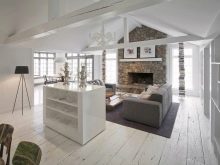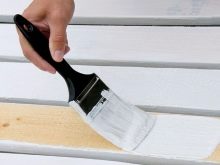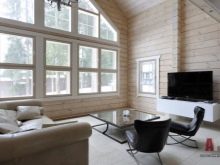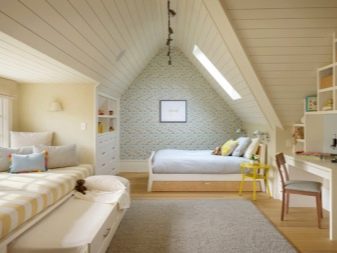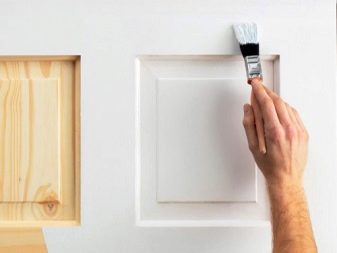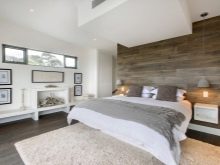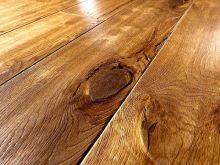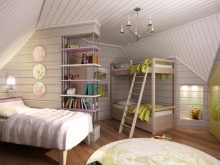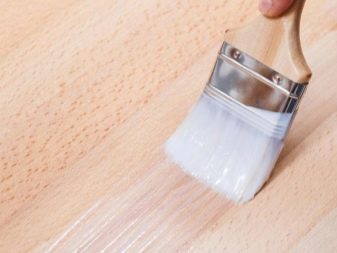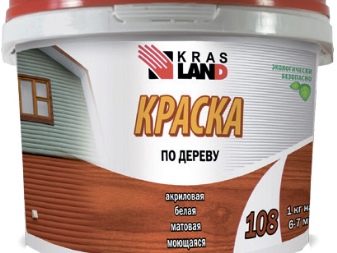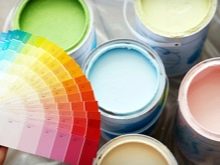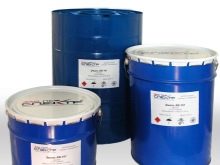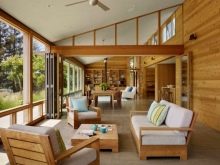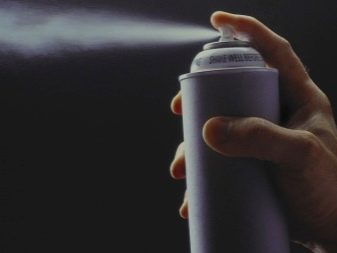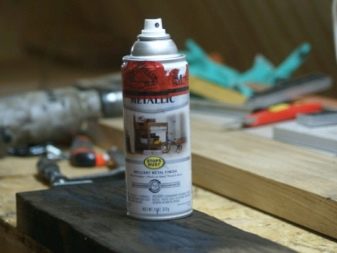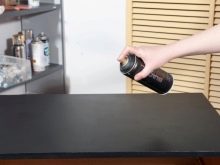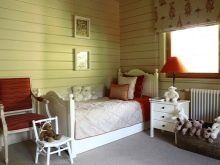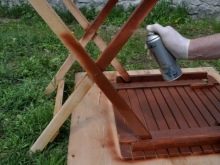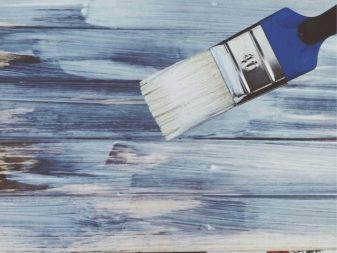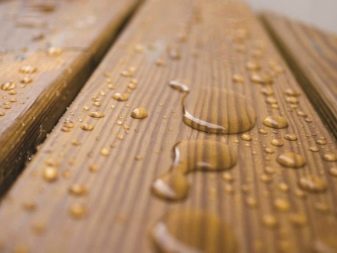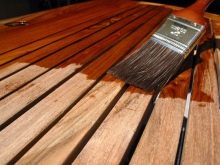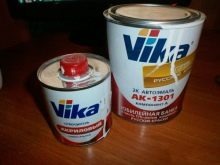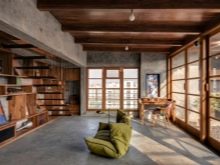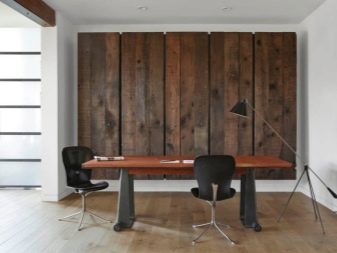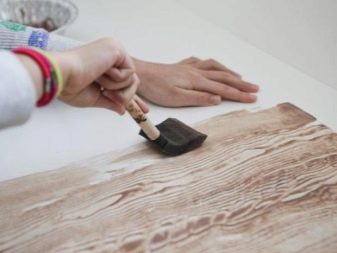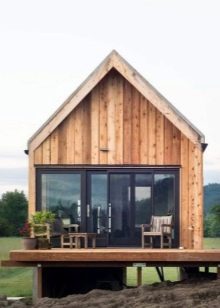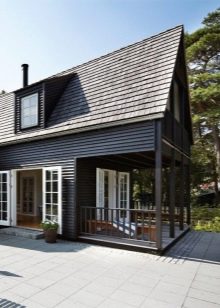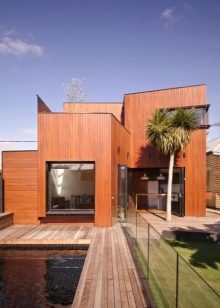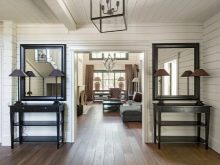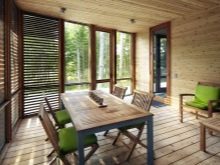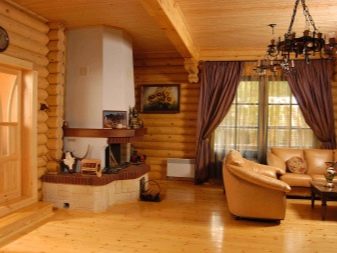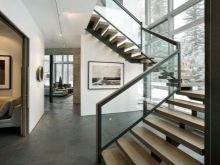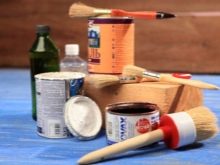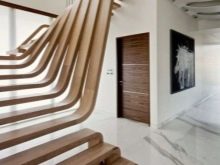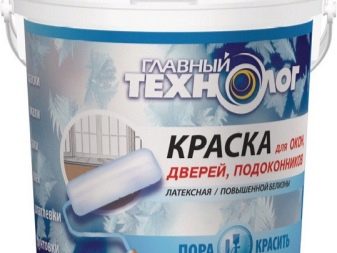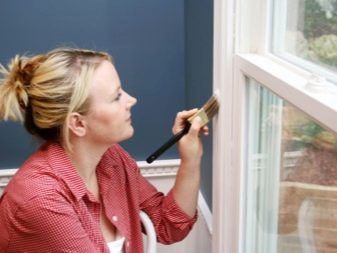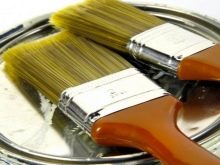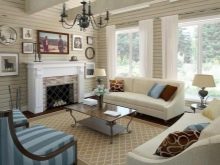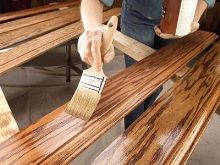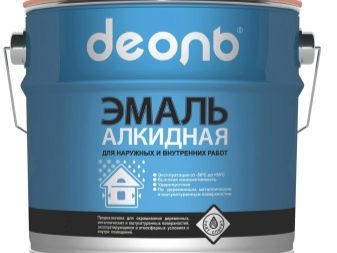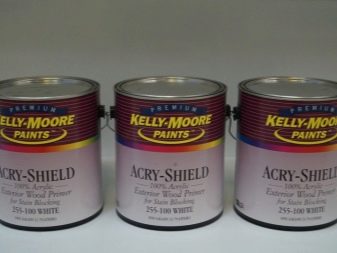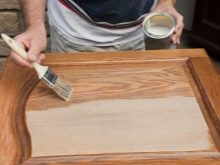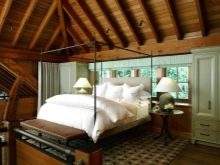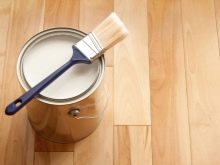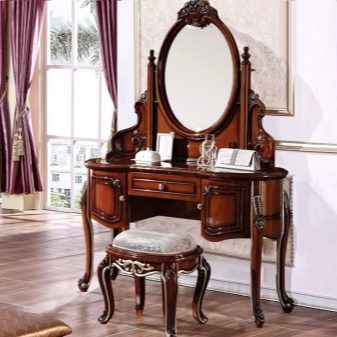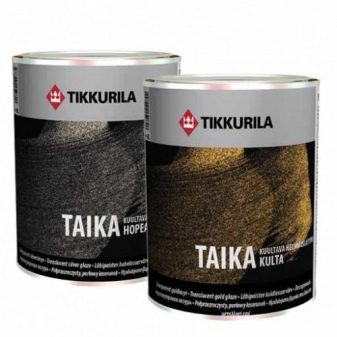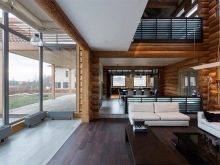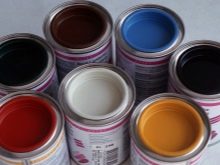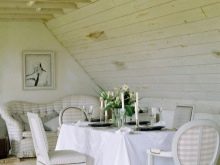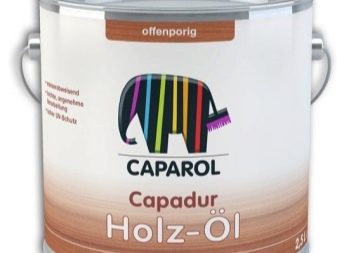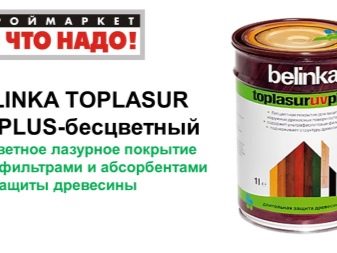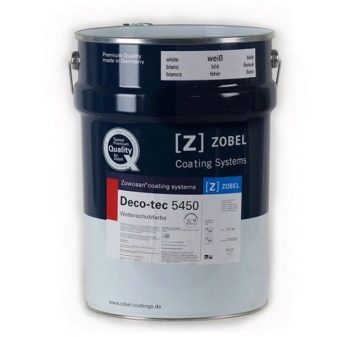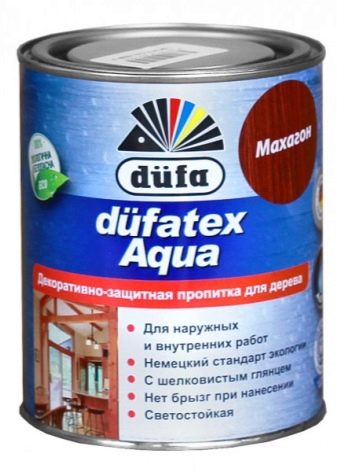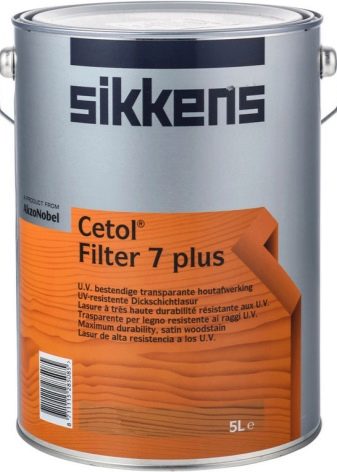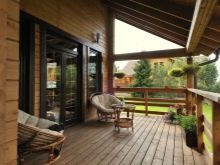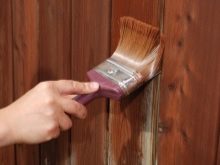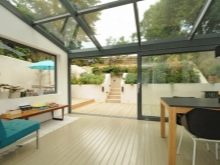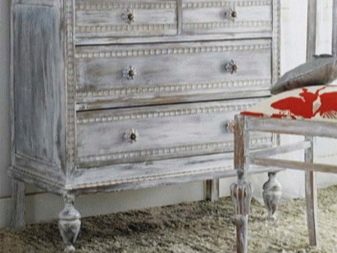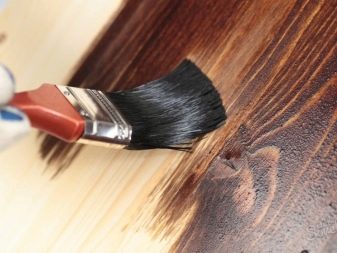The subtleties of choosing paint for wood
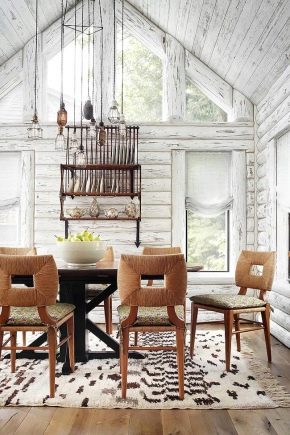
Wood is a very good material in demand for construction and decoration. Its advantages contribute to improving the appearance of various surfaces.
One of the most commonly used options for finishing this material is dyeing, for the successful implementation of which it is necessary to carefully select the coloring composition.
Special features
It is easy to decorate living rooms with paintwork materials. In this case, it is only necessary to strictly observe certain conditions.
The finish should dry out quickly, not have a foreign flavor (or have a faint odor), be different environmental and health security.
The choice of ideas for design is quite large, and it pleases many consumers.
Before considering the advantages and disadvantages of individual types of paint on wood, you need to find out what are the mandatory requirements for any formulations.
They are:
- elimination of cracks;
- prevention of fungal (especially mold) infection;
- maintaining a favorable appearance in any situation;
- Durability (including high resistance to mechanical stress).
If at least one of these requirements is not met, it can be considered that the composition was chosen incorrectly. Bad processing leads to the same result as the complete lack of processing - it will take a couple of years, and the wood will darken and crack.
In contrast to the coating of metal, stone or brick, for a tree it is necessary to use not only the coloring composition, but also special oil and varnish.
Kinds
Wood paint is often a special coating for exterior facade work. Such material effectively suppresses the impact of moisture and is not subject to destruction, even if the sun's rays strongly heat the surface.
- Acrylic the basis is ecologically pure, has no unpleasant smell and does not block the natural pores of wood.It gives the coloring composition the ability to resist the cold, with its help you simulate absolutely any shade. Water base, unlike synthetic materials, is safe for human health. Acrylic paint is also suitable for interior work; it is chosen when painting the floor, because the necessary components can be mixed quite easily.
It is important to note that it is not frost-resistant, therefore, such a composition should be stored only at positive air temperatures.
It should also be constantly protected from contact with any type of moisture.
- For wooden doors can be used perchlorovinyl paint XB-161. All dyes of this type give a rich thick color, dry quickly and thoroughly “seize” with the surface. The XB-161 formulation provides for the introduction of abundant portions of plasticizers. Normal temperatures during operation of the composition range from -20 to +40 degrees.
Applying perchlorovinyl paint in one layer allows you to limit its consumption, but it is advisable to paint the surface twice.
The aggressive external environment is easily transferred by paint, however, you should make sure that the base is well prepared and does not contain cracks and chips.
It is not allowed to paint wood with perchlorovinyl mixtures over acrylic paints, lime, silicate and silicone coatings for any purpose.
- Coloring compositions in cans they are good in that they allow you to reliably prevent typical problems - the formation of stains and the difficulty of forming layers of uniform thickness throughout the entire structure. In addition, any spray paints are always quick-drying. Manufacturers use nitro enamel, alkyd components and acrylic resins as the chemical basis for them. Each modern recipe worked out to the smallest detail, and apply all these types of coloring compositions can be almost without restrictions.
- By choosing acrylic based spray, you can use it for external work, and when painting room walls and interior items. In order for one layer to dry and acquire all the necessary properties, it will take a maximum of 20 minutes. This coating almost does not fade, is long enough. The variety of appearance is impressive, you can safely choose even the color of wenge.
It is important that with the help of acrylic blends even attractive wood paintings are formed.It will entice everyone who is interested in artistic ways of interior decoration, and loves elegant details.
- Water repellent paint for wood is recommended for rooms with a high degree of humidity. Compositions of various types fall into this category, but water dispersion paints are considered to be the best in terms of practical qualities. They are absolutely safe for humans and animals, are able to have a glossy or matte appearance after application. This paint makes it easy to maintain an optimal microclimate in any room.
- If you do not trust industrial products and want to make a completely safe dye yourself, milk paint (there are a number of similar compositions). In addition to skim milk, its recipe includes alcohol vinegar, slaked lime and certain mineral pigments, specific types of which depend on the purpose of the paint.
- Brown paintresembling the surface of rosewood looks elegant and noble in almost any interior. Enamel can also have this shade, although in chemical composition and other parameters it is very far from color in the usual sense.After the application of the enamel layer, the base should be heat treated with it in order to form the most durable and resistant to destructive coating. The most reliable wear-resistant paint on wood does not require such treatment, but its protective properties are somewhat weakened. It is because of the low resistance to wear and mechanical stress that all water-based dyes cannot be used for wooden floors.
- Two-component paint wood, regardless of the specific composition, often better than the one that includes only one component. Thus, polyurethane mixtures form few smudges (and, if they are complied with, do not form them at all), they can easily withstand even considerable mechanical stress.
Volume
The amount of paint consumed per 1 square. m wooden surface, always more than when painting metal, plastic or even stone, because the tree is actively absorbs dye. The exact figure is determined taking into account the dilution of the mixture, the complexity of the geometric shape of the surface, the number of layers, the previous treatment and other factors. Corrections for moisture and porosity of a particular wood sample can be neglected.
A variation of the coloring composition is also taken into account, the preliminary application of a primer reduces the need for it.
Colors
Inside the house color tone can be very different, it is dictated by design considerations. For any work, including outdoor, the choice of wood color requires a preliminary definition of tasks. If you want to harmoniously combine the building with the surrounding landscapes, it is advisable to use green and brown tones, and if you want to make the most of the house used red and orange dyes (both individually and in various combinations).
In addition to these tasks, the design solution may have other functions: masking the external defects of the building, visually changing the geometry of the structures, strengthening or reducing the natural light. In hot areas, it is advisable to cover the roof and other facade details with light colors.and if you live in a territory with a colder climate, you should prefer dark surfaces.
Both outside the home and inside (albeit to a lesser extent) thick rich tones burn out much sooner than less saturated. Therefore, to paint a wooden wall or an open sun terrace, you should use light shades. But note that white paint can quickly turn yellow. In addition, it is very difficult to notice the appearance of dust on a gray surface, and even after many years it can only slightly change its shade.
Architects, striving to create the feeling of maximum building size, constantly use light, almost transparent paints. Designers follow their example when it is necessary to increase visually a separate room or part of it. At the same time, along with a demonstration of a refined interior, one must observe the laws of color compatibility.
Excessive fascination with beige and cream tonality can make the facade or wall of a room dull and inconspicuous. But if you skillfully combine them with dark colors, you get an elegant, attractive incarnation.
If the design (product, architectural element) has a complex geometric shape, it must also be painted in light colors. Highlighting with bright colors is suitable for items of simple configuration that do not have small details.
The yellow or golden wall is excellently combined with a window and a door that are made of dark wood.But in most cases, designers use a more traditional version - they combine white and black in the interior according to the principle of contrast. Exterior white walls are the most beautiful, if you place around a lot of greenery. But the gray tone in this decision seems faded and inexpressive. It is preferred to highlight the brightest elements of the structure.
Matte paint can not give such an elegant gloss as glossy, but it does not mask the texture of the material itself. This moment is especially important for dyeing wood.. It concerns not only the design of the facade walls, but also the creation of artistic handicrafts. The translucent paint gives a similar effect, revealing the original texture even more. Lessing paints can be initially tinted or non-polished, in the first case it is required to find out how safe the used color is.
Surface
It is important to remember that the choice of a particular paint is determined by the features and functions of the wooden surfaces to be finished.
- For the stairs inside the house you can use a fairly wide range of dyes.When the original tree design is very elegant, and you do not want to hide it, you should not use paint, but varnish with a glossy or matte effect. Preserve the texture will help light paint applied without pre-priming the surface. Along with these parameters, fast drying and the absence of persistent concentrated odors are quite important.
- The steps should be covered with a composition that is characterized by the highest possible mechanical stability. If your staircase is outside the house or will be used primarily outside, it is recommended to use wood paint for outdoor work.
- Difficulties often cause the choice of paint for windows, because they are very diverse and differ in their characteristics. Obligatory requirements when painting the outside of the window are resistance to moisture and cold, effective resistance to microorganisms, slight abrasion and fading even under harsh operating conditions.
- When the paint does not meet the data requirement, it can not be called suitable for use. But the level of toxicity is not so critical, so you can safely choose the most resistant to various factors coating.Ask how much the paint will be plastic, because it has to experience a lot of temperature differences.
Which one to choose?
Before you paint a tree, you should consider a few important points:
- breed of the treated structure;
- the conditions in which the product is applied (to be applied);
- whether the coating is applied for the first time or on top of the previous layer;
- what should be the appearance of the surface after painting - transparent or not transmitting light at all.
Opaque wood dye mixtures almost always belong to one of three groups: alkyd, acrylic or oil.
- Alkyd paint It will easily survive even the Siberian frosts and dries quickly, but it is not suitable if you need to deeply soak the wood. Typically, such compositions are needed for the design of an outdoor door, window frame or facade.
- Paint on the basis of acrylic resins It is considered more modern and practical, but its cost is quite high. The costs are justified if you want to make a game room or an outdoor structure that is completely safe for children. Wood will “breathe”, and you can apply acrylic paint not only with a brush, but also with any other tool.
- Oil paints practically out of use due to its toxicity, low compatibility with other dyes (when re-staining), unpleasant smell and high risk of smudges. In addition, these painting mixtures are more expensive than more convenient acrylic paints.
The only case where it is advisable to use an oil-based dye is to minimize the amount of work and thoroughly saturate the wood.
- For the decor you need to choose scanting compositionsthat protect wood from the damaging effects of the environment. The advantage of such substances is the formation of the thickest outer layer. Deep penetration into the material and the inability to damage the painted surface with water is very important when finishing the exterior surfaces of a building.
Manufacturers and reviews
Building paints are made by many companies, but not all produce really high-quality and decent products. The products of the Finnish company Tikkurila, which have been occupying one of the leading positions on the Russian market for many years, attract attention. Among the paints represented under this brand, silicone blends are most often bought.. Skillful use allows you to give the painted surface not only glossy or matte gloss, but even imitation of textures such as satin and mother of pearl.
Scandinavian developments allow steam, which means that no stagnation of moisture will occur. They will last a long time, are completely safe for people and nature, practically not subject to destruction by mechanical action. Consumers point out such positive aspects of these coatings as minimal pollution and relatively low material consumption.
Paints for facades of private houses are widely used. brand "Kaparol"because it is not difficult to choose among them the dye suitable for you tonality. At the same time, you should not worry about the service life, ecological and sanitary safety of the coating. Most often used azure, which allows you to trim the external structures - roofing, upholstery, walling, frames, wooden gates and shutters. In the line "Kaparol" there are solutions to maximize the texture and color of wood.
Slovenian company Belinka produces a wide range of paints and products that protect the surface of the tree.All of them are designed to emphasize the natural texture, you can give the surface any tone you want. Toplasur UV Plus blocks ultraviolet rays very well and transforms the look of wood with the most sought after colors. Judging by the reviews, the first layer requires a large amount of paint, but it allows you to focus on the tree structure.
German paints Zobel fully comply with the requirements of Russian standards and practical conditions of use. Even with strong cold exposure, they manifest themselves from the best side.An undoubted advantage is also the ability to tint the paint individually.
Guaranteed service life without peeling, as can be seen from many reviews, is at least 5 years even for the facades of houses.
Products company Biofa It is considered quite perfect, but you need to consider that it looks more like oil for processing wood with a coloring effect, rather than paint. Apply such compounds can only be on a well-cut and polished surface.
Dufa company represents a fairly wide range of coloring compositions. All of them are water-based (environmentally friendly) and can be selected for specific conditions of use.On the market there are both moisture resistant (needing tinting), and the most vivid coloring compositions. Feedback on the products of this company is extremely positive.
Sikkens For about two centuries, it has been producing excellent paints and varnishes, which allow us not to limit ourselves to typical solutions and create a truly original interior. Users note the ease of finding the right shades, very favorable prices and ease of use of paints and varnishes from this manufacturer.
Successful examples and options
Consider a few good options for coloring wood with different compositions.
For the terrace you need to choose the paint individually, as accurately as possible taking into account all the features of a particular wood species. There is no doubt that the open areas of wood need to be painted darker in order for street dirt and dust to have less negative impact. At the same time for the interior board such a requirement is not always, but only for design reasons.
“Antiquity” staining does not always mean using a patina effect, but darker and more saturated tones should be used in it.The picture clearly shows how they replace the original light background of wood.
The use of polymer paints is justified by their high penetrating power, low susceptibility to ultraviolet rays, chemical and atmospheric resistance.
You can choose red, lilac, yellow or green tones - they all look equally attractive.
The technology of painting wood will see in the next video.
